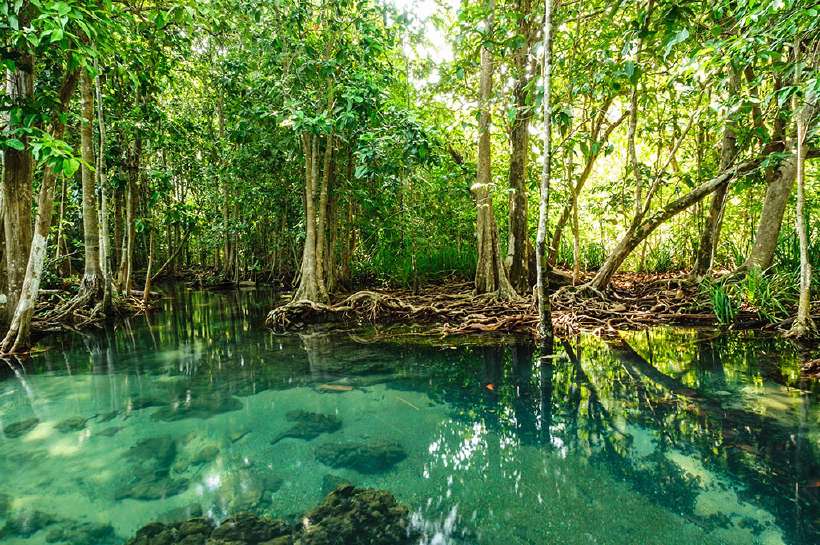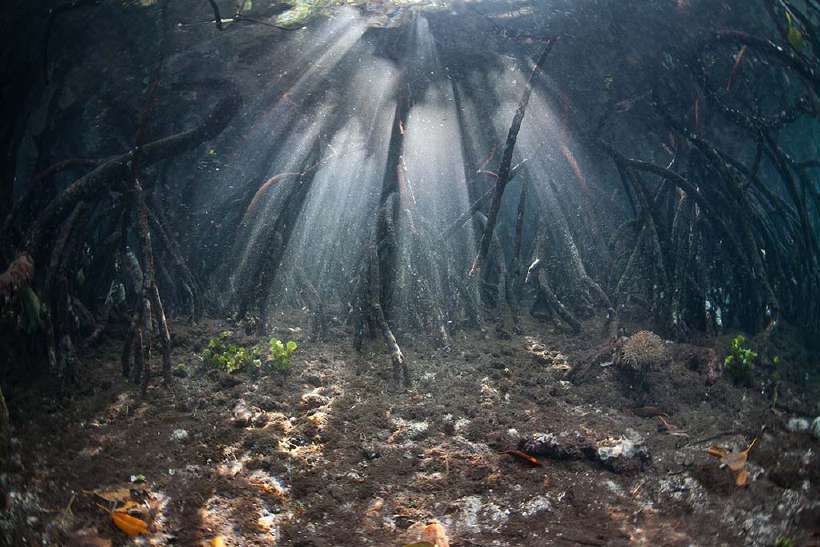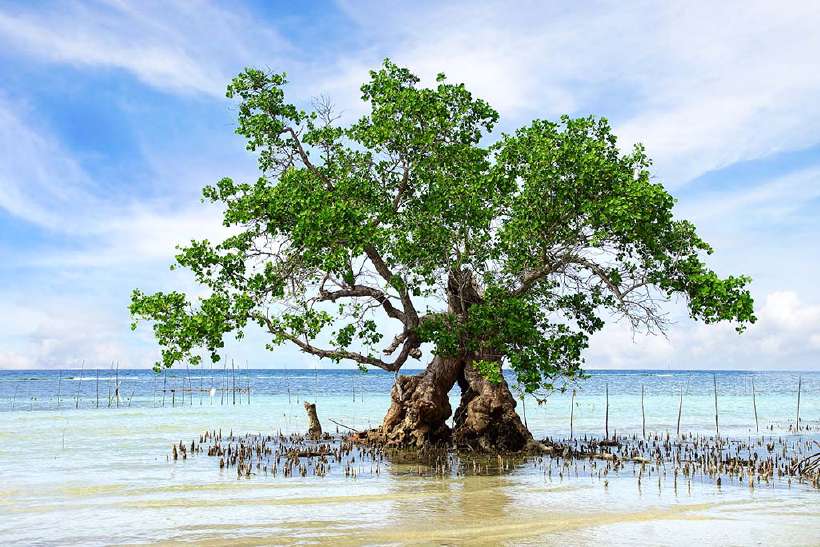The Importance of the Mangrove Forest
Home / Science for Kids / Planet Earth for Kids / The Importance of the Mangrove Forest
Tropical coastlines and marshy areas around the world have one thing in common: mangrove forests. These consist of trees and shrubs that throw out many prop roots and sustain a large variety of aquatic animals, birds and plants. These mangroves form a complete ecosystem. That is, they provide a complete base for all the organisms within that environment to live and thrive. That keeps the balance in the larger environment of which humans are a vital part. Marshy and swampy tidal areas near seas and estuaries, where rivers empty into the sea, are ideal for mangrove forests.

The prop roots have one function. They support the mangroves in the ever moving loose sand, as sea water flows over it.
All types of aquatic life forms can be seen in these mangroves — turtles, crabs, shrimps, lobsters, prawns, fish, storks, egrets and cranes, among others. Algae, which is the green scum on the water, is a source of food for many fish.

The mangrove belt is very important to humans. For, like the coconut, cashew and casuarina trees, it provides protection to the coastline from the rough seawaters and prevents soil erosion. During a cyclone or tidal wave, a mangrove belt faces the fury of wind and water and minimises the destruction on the coastline. The tidal forest is a rich source of biomass (organic matter that is used to produce energy).

But, not surprisingly, this rich aquatic ecosystem is under threat from humans. Land is being reclaimed from the sea for industrial and commercial purposes. Increase in shrimp farming has led to a decline in mangrove forests. Laws have been enacted to protect these forests, but the plunder continues.
315 words |
3 minutes
Readability:
Grade 7 (12-13 year old children)
Based on Flesch–Kincaid readability scores
Filed under: planet earth
Tags: #trees, #environment, #roots, #ecosystems
You may also be interested in these:
Which Insects Live the Longest?
Seasons in a Tree’s Rooted Life
What are Truffles?
The Chief Minister and the Butterfly
Excerpts From 'The world of trees'